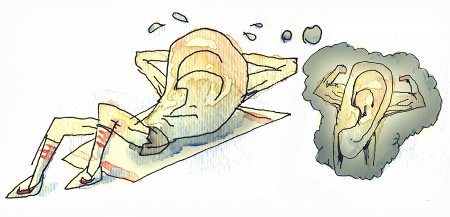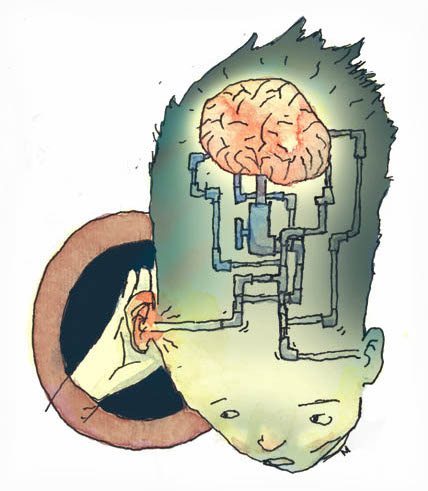Want to bring new life to your music? Effortlessly hear exactly what’s being played, and get the sounds in your head out into the world? Ear training is the key!

If you’re a studio engineer or a classically-trained musician, you almost certainly know a bit about ear training. But most people don’t know what ear training is – an incredibly useful technique to enhance the way you experience and understand music and sound!
What is ear training not?
Ear training is not about compensating for hearing loss. As we age, our ability to hear higher frequencies decreases, and some people might think ‘ear training’ is about restoring these abilities – it isn’t! That said, people who have suffered hearing loss are likely to find ear training particularly beneficial, as it will help them maximise the enjoyment they get from the hearing they do have.
In fact, in spite of its name, ear training is not really about improving the ear itself! The majority of ‘ear training’ exercises are actually exercises for the brain. We are teaching our brains to reliably pick apart what the ear is physically hearing and turn it into the concepts which are meaningful to us.
As we train we become able to hear more complex concepts and with much greater reliability. You might start off just hearing that a series of notes are piano notes, but after training you could report that it was “an ascending harmonic minor scale with first inversion i-iv-v-i chords underneath!” You’ve probably heard great musicians or audio pros do this kind of thing – Don’t you want to too?
What is ear training?
‘Ear training’ is, most simply,
anything somebody does to improve the way they hear.
Anybody who sings, plays an instrument, or works in a job where they pay a lot of attention to sound will be doing this already! However, while their ears will inevitably be getting better as they practise and hone their art, this is a very passive process – and so a very slow process. Ear training is about taking active steps to improve the same skills, so that progress can be much quicker.
For example, humans naturally learn to distinguish male from female voices as we grow up. We are surrounded by them and have the ‘right answer’ given to us most of the time by seeing the person who’s speaking. But if you’re an English-speaker learning Spanish, and want to be able to distinguish regional accents from around Spain? It takes a much more active effort to make progress. You’ll have to find examples and techniques which help you, and the quickest way to make progress will be by focused effort on learning ways to tell the accents apart. Otherwise it will be years before these skills develop on their own!
What are you hearing?
The speech examples above illustrate the main kind of ear training – learning to reliably classify what you’re hearing, and then knowing what label to put on it.

- Learn the different classes
e.g. Different notes, different types of chord, different types of instrument, etc.- Learn what to call each class
e.g. “C,D,E,F, …”, “major, minor, diminished, …”, “oboe, flute, clarinet, …”
Sometimes the first part is easy – for example, most people will easily hear the difference between a major and minor chord without practice. Once they’ve been told that the ‘happy sounding’ chord is called ‘major’ and the ‘gloomy, sad’ one is called ‘minor’, they have the second part too.
You might think that only the first step matters – after all, if you can always hear what ‘class’ something fits into, why does it matter what label you put on it?
Well, there are two good reasons for learning the labels:
- Using common terms helps you work and play better together with other musicians, and learn from them.
- Having clear, defined labels for the types of thing you hear greatly speeds up learning to reliably classify them by giving the brain a framework.
Hear more at once
Not all ear training is about identifying sounds. For example, another important type of training is teaching your brain to process more information in parallel. Coming back to our voice analogy: A young child may be able to tell if a voice is male or female, but still really struggle in a room full of people talking! A few years later this will pose no problem, and they’ll be able to easily tune into one person or another amidst the noise of the room.
Ear training lets you do the same thing with music – When listening to music, ear training can let you:
- Hear the individual notes in chords and harmonies
- Identify how different instruments co-exist to create the overall sound
- Follow multiple instruments’ parts at once rather than just the melody
The music comes to life, and what used to be a noisy mess becomes clear, and richly rewarding.
Listening in parallel is something you often train for a particular skill. For example, once you’ve learned to identify one musical interval at a time, you might extend this by learning to hear the multiple intervals which make up a chord or harmony. This lets you benefit much more from the skills you already have, and opens up new worlds of sound.
Why do ear training?
We’ll be looking in detail at the benefits of different kinds of ear training over the weeks to come, but fundamentally – why should you be interested?
The skills we improve through ear training are the skills we use all the time as musicians, audio professionals, or just as music fans. They lie beneath everything we do with sound and music, and yet most people never spend any time on them! Sadly, most people assume that these are things you ‘just get better at’ automatically as you practice your instrument, or work in a studio.
By choosing to actively improve your skills through ear training, you will make much faster progress and unlock talents you never thought you’d have.
If you’re a musician, ear training is the number one thing you can do to improve your musicianship and bring life to your music.
If you’re an audio professional, ear training will let you leap right to the solutions rather than finding them by trial and error – because you’ll understand exactly what you’re hearing when something sounds wrong.
If you’re a music fan, ear training will let you hear things you’ve never heard before, even in music you already knew. You’ll have a much deeper understanding of the music you love and your tastes will be broadened as you begin to hear what’s so great about music you never thought much of before.
Still not convinced? Have a different idea of what ear training is, or the benefits it provides? Leave a comment below and let me know!
What next? Take the Ear Training Crash Course to find the area which interests you, or visit our topics page to jump right in!







Hello Christoper,
Well done for all your work on this website – I'll let you know how I progress.
Best wishes,
Anne
Thanks, Anne! I hope you'll find the articles interesting :)
Chris, good to see you yesterday!
This looks extremely impressive and exciting.
Hope Amsterdam goes well and see you soon.
Michal
Great talking to you about using technology to teach music, and hearing how you help your students develop their ears.
I look forward to continuing the conversation some time soon!
Good analogies of everyday experiences with peoples voices, which allowed me to realise that I probably have got the innate ability to develop my musical ear. So now it's up to me to organise the time and enthusiasm to do the daily practices. Thanks for the help.
You're very welcome, Mike!
You're absolutely right that you have the ability to develop your ear. Whatever your age, ability, or background in music, there's lots you can do to enjoy music more and become more musically creative by developing your ear. Let us know how you get on!
If you have any questions feel free to come ask in the Forums.
Dear Christopher Sutton,
My name is Sungyoung Kim who is conducting research on ear training for "audio engineers".
While I am preparing my talk in upcoming conference, I found your webpage and one of your pictures amazing.
If you permit, I would like to copy the figure (top one) and use for my presentation which will make audience better understand my talk.
Please let me know what do you think.
Thank you very much.
Sungyoung kim
Dear Sungyoung Kim,
I'm glad you liked the illustration! Please do use the picture for your presentation. If it's possible to include an attribution to our website on your slides that would be great. Thank you for asking.
I would be very interested to learn more about your research and this presentation. My email address is [email protected] if you'd like to get in touch.
Kind regards,
Christopher
U didn't mention types of ear training